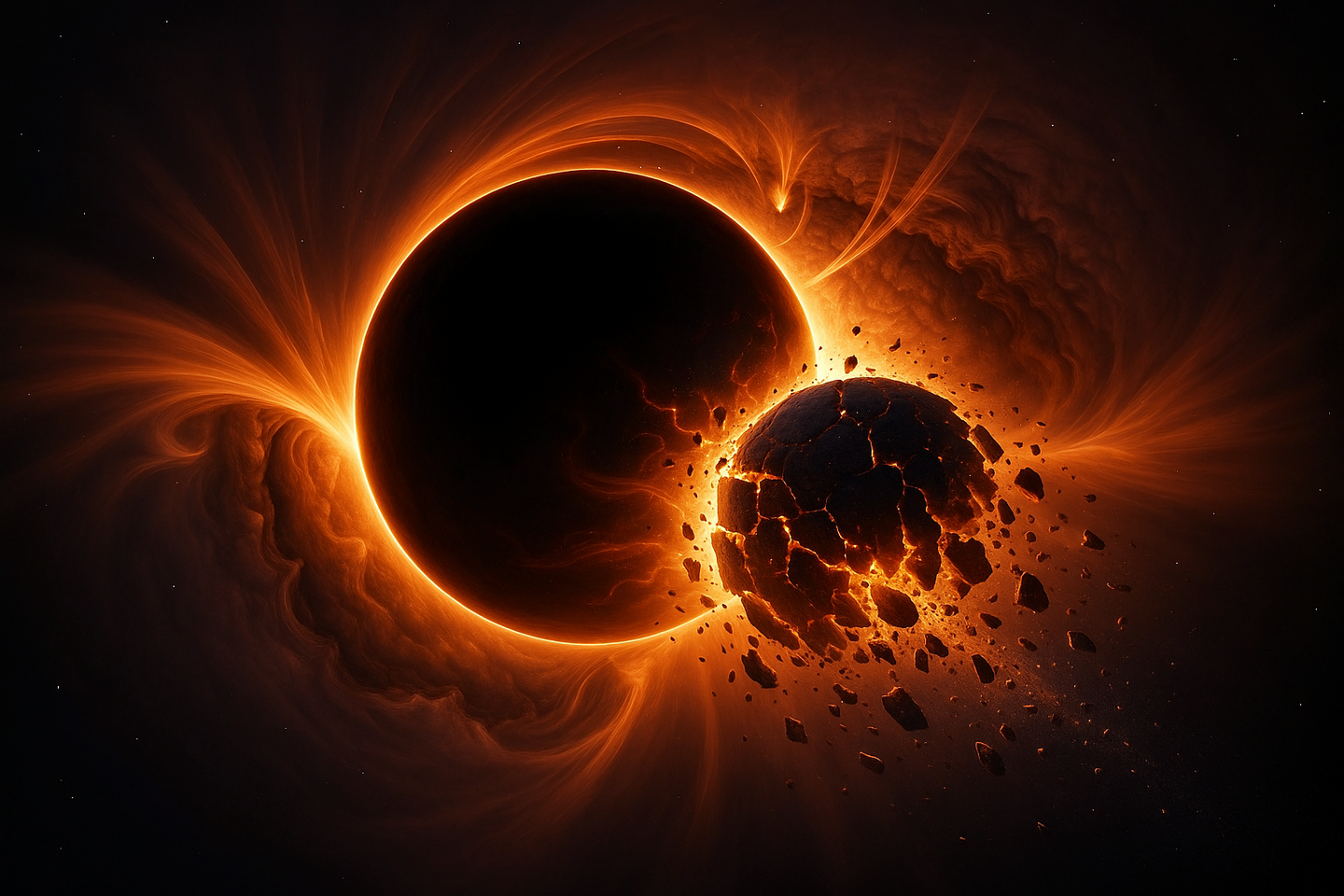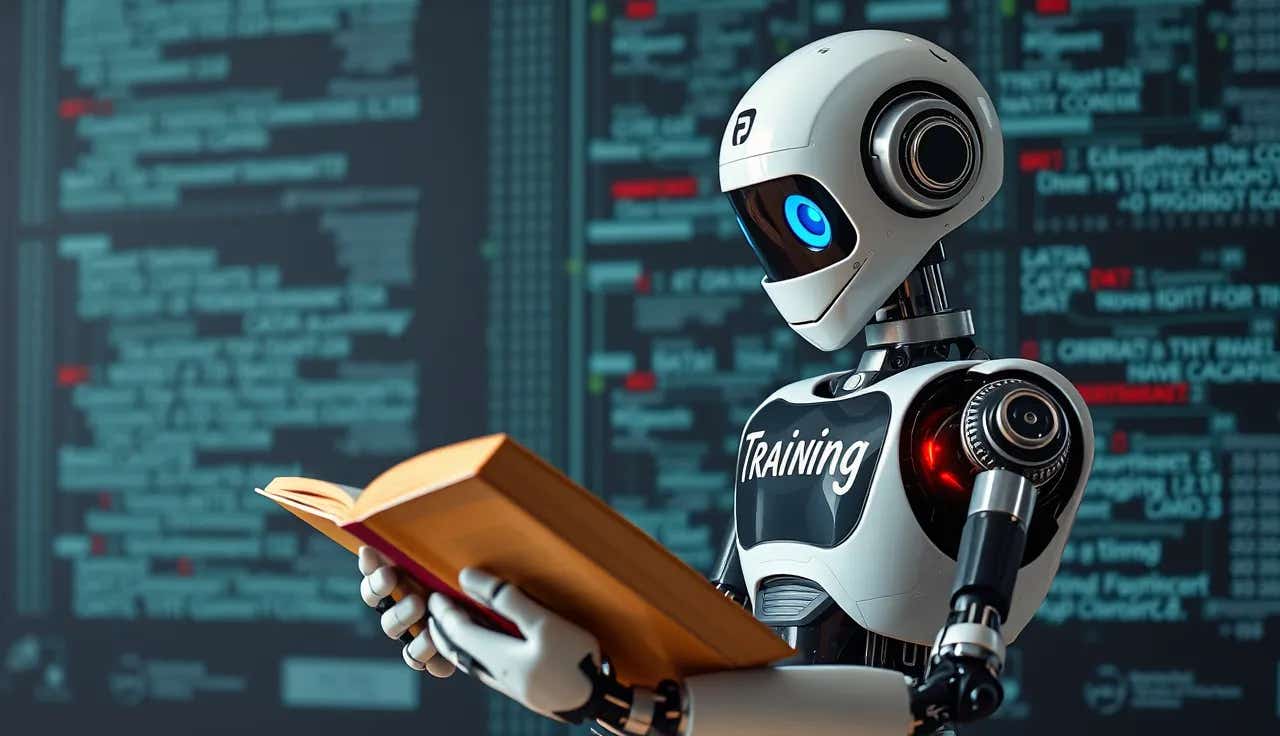What happens to matter when it gets sucked into a black hole?
From spaghettification to time dilation, here’s what scientists know—and don’t know—about what happens when matter vanishes into a black hole.

 Edited By: Joshua Shavit
Edited By: Joshua Shavit

How black holes stretch, crush, and swallow matter. (CREDIT: AI-generated image / The Brighter Side of News)
Centuries before anyone pointed a telescope at the sky, Isaac Newton figured out how gravity works. He showed that any object with mass pulls on every other object—a result that explained falling apples and orbiting planets. Centuries later, Albert Einstein built on the idea. In 1915, his general theory of relativity showed that gravity is not a force after all—it is the curvature of space and time.
That insight gave rise to one of the most mind-bending questions in science: what happens when so much mass is packed into such a tiny area that even light can't escape? The outcome is a black hole—a zone in which matter and energy disappear from view and the normal laws of physics no longer hold sway.
How Black Holes Are Born
Black holes are formed when massive stars collapse under their own gravity. A star much larger than the Sun gradually runs out of fuel and collapses under its own gravity. Its outer layers burst outward in a supernova, but its core continues to contract until it is of infinite density—a point called a singularity. Surrounding that point is the event horizon, the point of no return beyond which nothing, including light, can escape.
German physicist Karl Schwarzschild first computed this boundary in 1916. The event horizon is not a physical surface but a one-way gateway. Anything that passes through it is gone forever.
Astronomers now know that nearly all large galaxies, including our Milky Way, contain a supermassive black hole at their centers. These monsters contain millions or even billions of Suns. Ours, called Sagittarius A*, contains about 4.3 million times the mass of the Sun and is roughly 44 million kilometers across.
The Point of No Return
If a star or any object strays too close to a black hole, it's history. Gravity on a black hole is so unbalanced that it pulls much harder on the near side of the object. This stretching force is so strong that scientists call it "spaghettification."
Physicist Stephen Hawking described the picture so graphically in A Brief History of Time: an astronaut falling into a black hole would be "stretched like spaghetti." Small black holes create the most extreme tidal forces, tearing matter apart atom by atom. Supermassive black holes are more insidious at first, so something could cross the event horizon without instant destruction—but eventually, it's crushed into the singularity.
Sometimes, instead of being stretched, a star that gets too close becomes flattened. In a "pancake detonation," the star is squeezed by tidal forces and explodes in a blast of energy. The remains circle the black hole in a glowing vortex of gas called an accretion disk.
A Cosmic Whirlpool of Light
The accretion disk is where the final moments of material are played out in a maelstrom of energy. Torn-apart stars, gas, and dust orbit the event horizon at near the speed of light. Friction heats them to temperatures of millions of degrees, making the disk shine in visible light and X-rays.
Sometimes these wild forces send matter outward instead of inward. Black holes are capable of sending narrow jets of superheated particles flying outward at near light speed, producing enormous outbursts of radiation that can be seen billions of light-years away—although the black hole itself cannot be seen.
The first hint of a black hole came in 1964 when researchers detected strong X-rays coming from a region called Cygnus X-1. The Event Horizon Telescope, an array of radio observatories around the world, captured the first-ever image of a black hole's shadow in the galaxy Messier 87 in 2019. The bright orange ring was not the black hole itself but the superheated material accreting into it.
Time Slows Down Near the Edge
The closer to a black hole something gets, the more space and time are distorted. To a distant observer, anything that falls in looks as if it slows down and comes to a stop at the event horizon. To the falling object, though, time passes normally—while the rest of the universe appears to speed up. This strange effect, called time dilation, is one of Einstein's predictions.
You experience a weaker form of it every day. Clocks on airplanes tick a bit faster than Earth-based clocks since they're farther from the gravity of the Earth. Near a black hole, the effect is so extreme that time itself nearly grinds to a halt.
Where Does It All Go?
No one knows for certain what happens to matter that crosses the event horizon. One possibility is that it's compressed into the singularity, where space and time curve inward upon themselves. Another, more speculative idea suggests black holes may be connected to "white holes"—cosmic antipodes that spew forth matter elsewhere, possibly even in another universe. These spacetime 'tunnels' are referred to as wormholes, but no one has yet found proof they exist.
Then in 1974, Stephen Hawking added a new twist. Black holes, he proposed, aren't completely black—they slowly release energy in the form of what is now called Hawking radiation. On timescales unimaginable, that would make a black hole evaporate. But even a small one would take longer to vanish than the age of the universe multiplied by a number with 67 zeros after it.
Why Black Holes Matter
Black holes are cosmic monsters, perhaps, but also architects and teachers. They shape galaxies, influence star formation, and send out ripples in spacetime called gravitational waves. Merging black holes create waves that stretch and shrink space itself—predicted by Einstein and finally detected a century later by the LIGO observatory in 2015.
For scientists, black holes are the ultimate challenge. They push relativity and quantum mechanics to the limit and may one day lead us to a single unifying theory of how gravity and the smallest parts of the universe interact.
Related Stories
- Rare black hole-star merger creates the longest gamma-ray burst ever
- Astronomers spot a black hole ripping apart a star outside a galaxy’s center
- Scientists finally confirm Hawking’s black hole law strengthening Einstein’s theory of gravity
Like these kind of feel good stories? Get The Brighter Side of News' newsletter.
Joseph Shavit
Science News Writer, Editor-At-Large and Publisher
Joseph Shavit, based in Los Angeles, is a seasoned science journalist, editor and co-founder of The Brighter Side of News, where he transforms complex discoveries into clear, engaging stories for general readers. With experience at major media groups like Times Mirror and Tribune, he writes with both authority and curiosity. His work spans astronomy, physics, quantum mechanics, climate change, artificial intelligence, health, and medicine. Known for linking breakthroughs to real-world markets, he highlights how research transitions into products and industries that shape daily life.



